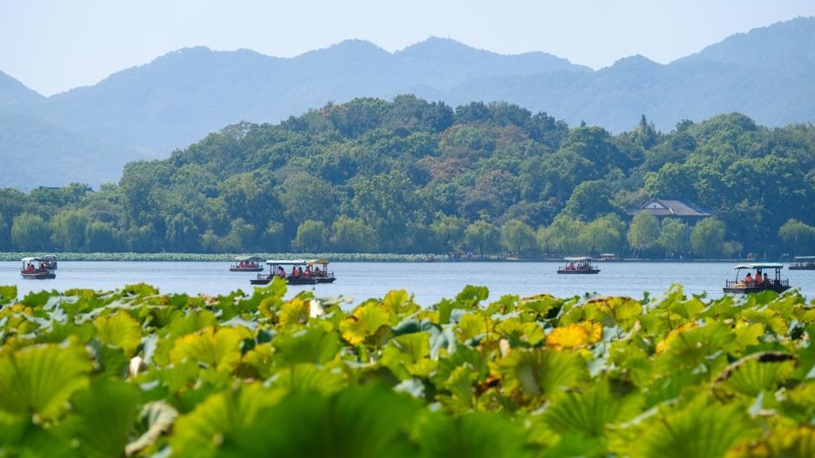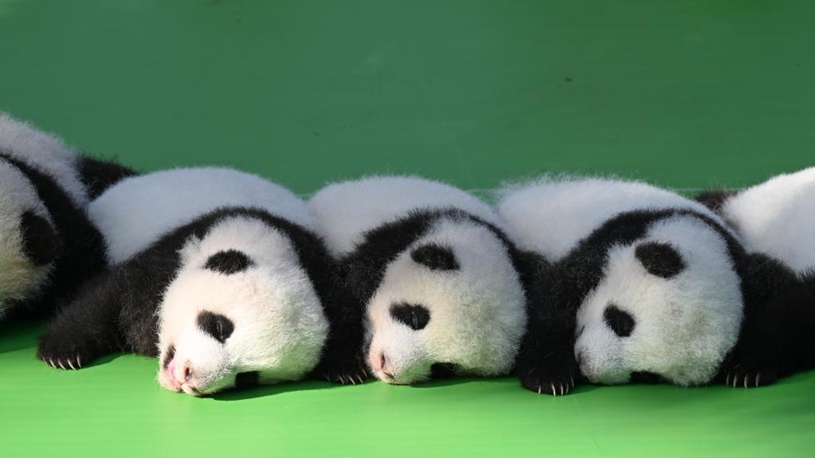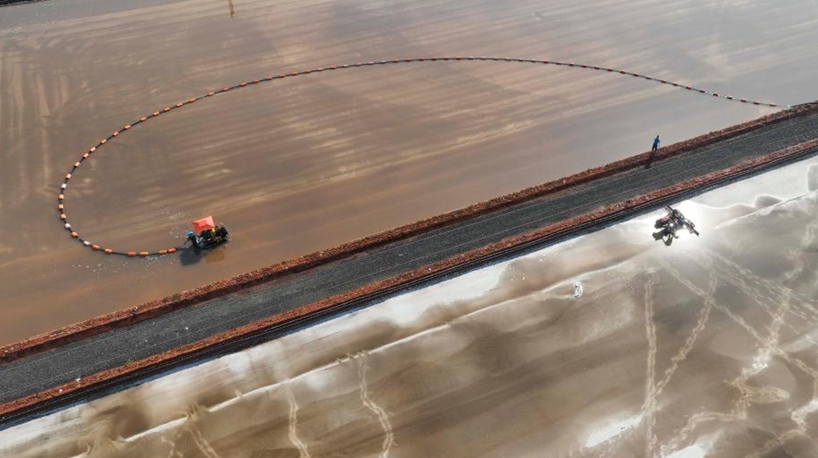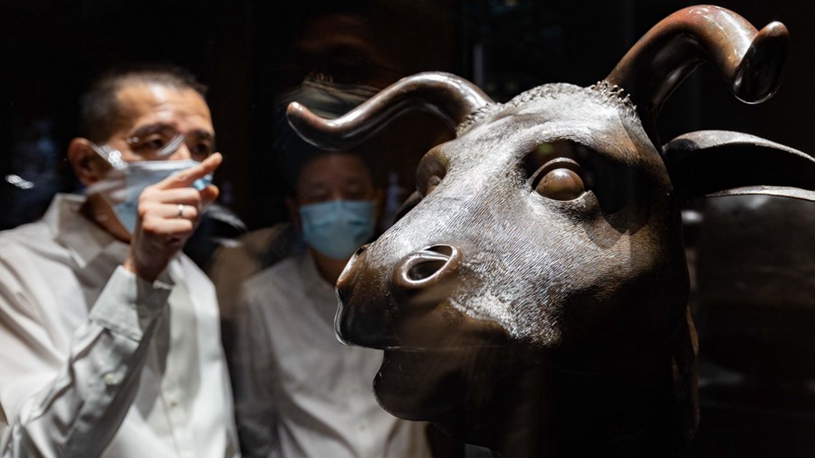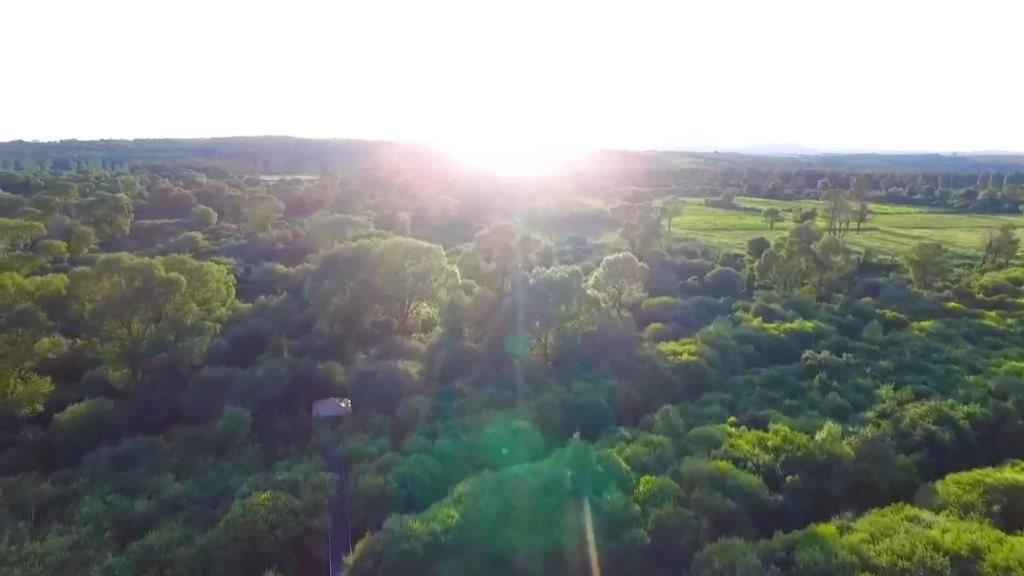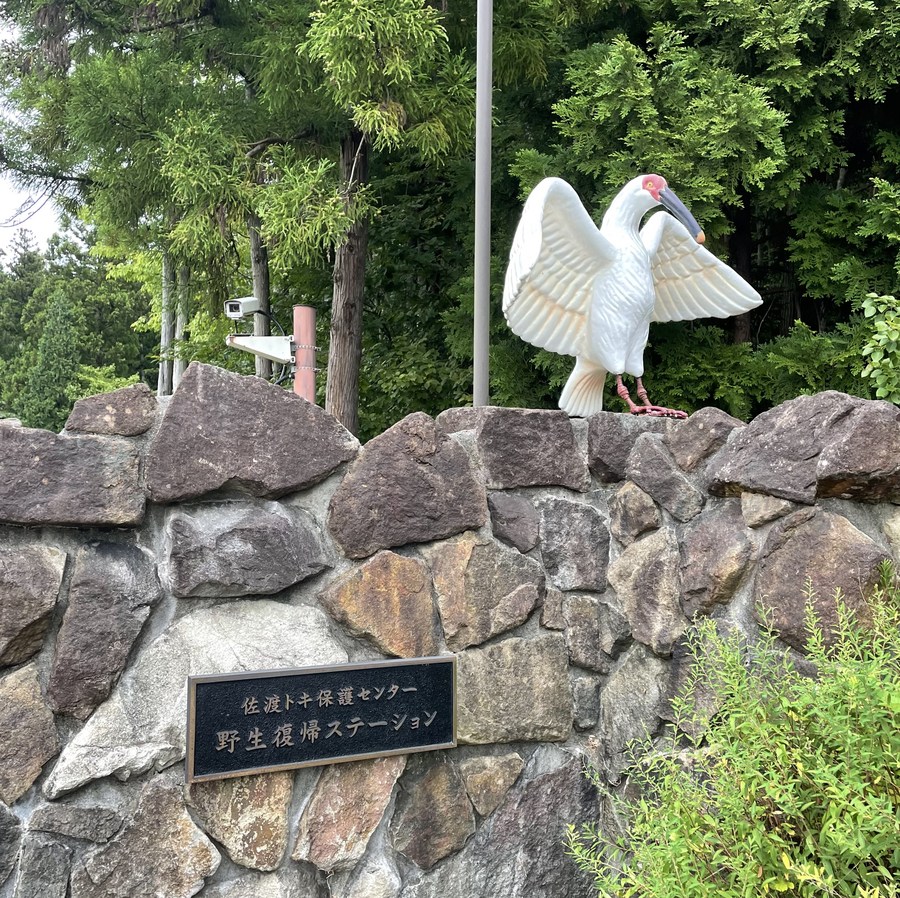
Photo taken on Sept. 28, 2022, shows the entrance of Sado Japanese Crested Ibis Conservation Center in Sado island, Niigata Prefecture, Japan. (Xinhua/Wang Zijiang)
Known as the "Auspicious Bird" in China, the crested ibises gifted by China help Japan's Sado save the species from the danger of extinction and achieve human-nature harmony.
TOKYO, Oct. 3 (Xinhua) -- On the early morning of Oct. 1, three crested ibises, an endangered bird species once on the verge of extinction here, left their cage and flew into the sky one after another on Sado island off Japan's Niigata Prefecture.
This was the last release of the year at the Sado Japanese Crested Ibis Conservation Center.
Japan has been trying to reintroduce the internationally protected species to the wild since 2008, following successful artificial breeding with a pair of the birds presented by China in 1999. A total of 492 ibises have so far been released on Sado island, bringing back crested ibis from the danger of extinction.
In January 1999, two crested ibises, Yang Yang and You You, gifted by China as symbols of friendship arrived in Sado to help rebuild the species in Japan. At that time, Sado center was home to the only crested ibis left in Japan, a female named Kin.
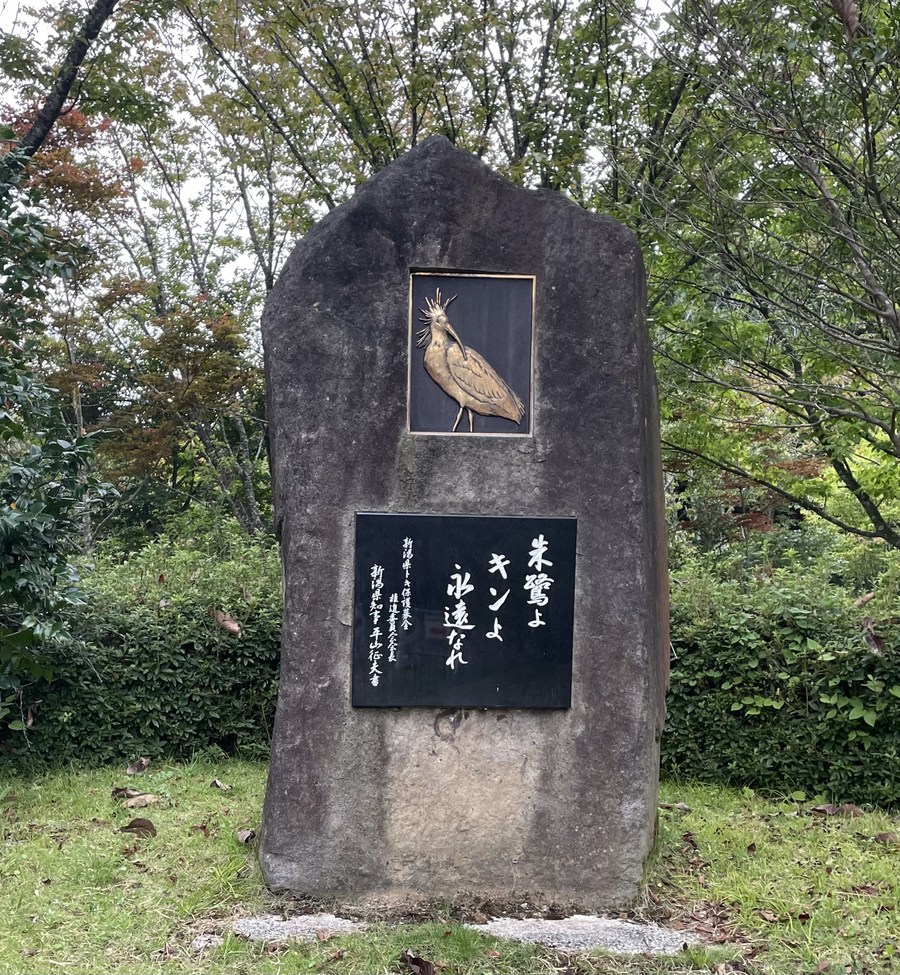
Photo taken on Sept. 28, 2022, shows the stone monument commemorating the crested ibis "Kin" in Sado island, Niigata Prefecture, Japan. (Xinhua/Wang Zijiang)
Twenty-three years later, Yang Yang and You You are still well protected there, and it is very difficult for people to visit them. Yoichi Hokari, head of the Sado Japanese Crested Ibis Conservation Center, allowed Xinhua reporters to have a glimpse of their life through the computer monitoring system: in the innermost cages at the center, wearing foot tags No. 16 and No. 17 respectively, they were leisurely strolling in front of the camera.
Hokari said that the male bird You You and female Yang Yang are now 26 years old, equal to 80 for human. They have now been separated into two cages, where You You lives with a 13-year-old female bird and Yang Yang with another 14-year-old female.
A crested ibis is an iconic bird deeply rooted in Japanese history and culture. Historically, the birds were widespread across Japan, however, the number of crested ibises in the country plunged in the 20th century as the birds were hunted for their meat and fine feathers. They also lost their habitats due to deforestation.
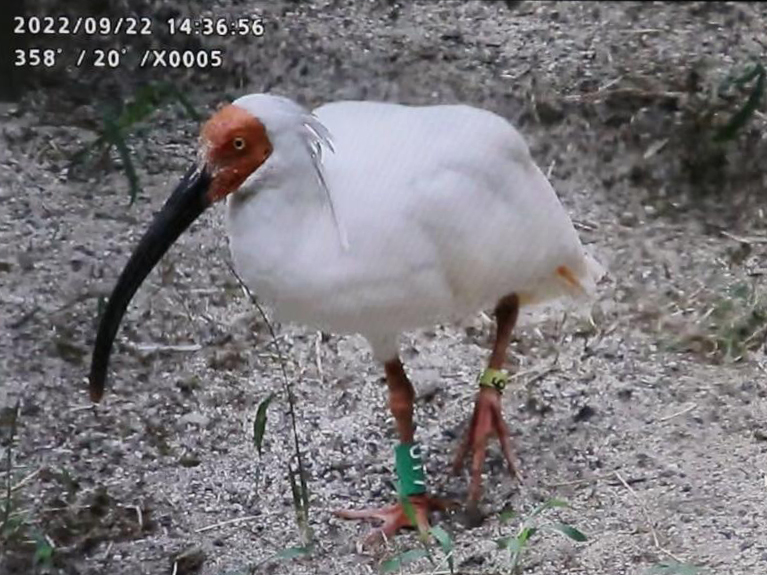
Photo taken on Sept. 28, 2022, shows the China-gifted crested ibis "You You" through the computer monitoring system in Sado island, Niigata Prefecture, Japan. (Xinhua/Yang Guang)
To save the endangered species, the Japanese government captured the last five wild crested ibises on the Sado Island and relocated them to a conservation center in 1981.
Meanwhile in China, seven wild crested ibises were discovered in the mountains of China's northwest Shaanxi Province the same year.
The crested ibis has long been adored by the Chinese people as an auspicious bird for its beautiful appearance, thus known as the "Auspicious Bird" in China.
Due to the failure of Sado center's plan to artificially breed crested ibises, by 1995 there was only the aging Kin in Japan. Ikuo Hirayama, the then governor of Niigata Prefecture, recalled, "Seeing Kin, I made up my mind to continue the task of crested ibis breeding in Sado, and see the birds fly in the sky of Sado again."
In Nov. 1998, on the occasion of a Chinese leader's visit to Japan, Hirayama took the opportunity and told relevant Chinese personnel that Japanese people wished to have a pair of healthy crested ibises. About two months later, You You and Yang Yang arrived in Japan.
On May 21, 1999, the good news that You You and Yang Yang had given birth to their first chick was immediately heard across Japan. In the following year, the pair gave birth to two more chicks. In October 2000, the Chinese government gifted another female ibis named Mei Mei.
In 2003, Kin died at the center at the age of 36, an equivalence of 100 for human. Crested ibises born in Japan became extinct following her death. Today's crested ibises on the island are all descendants of those from China's Shaanxi Province. At this point, the three crested ibises from China produced 37 offspring in Japan. To ensure genetic diversity, China has since sent crested ibises twice.
The ultimate goal of protecting crested ibis is for them to return to nature. In Sept. 2008, 10 crested ibises were released from cages, the first time in 27 years that crested ibises once again soared in the sky.
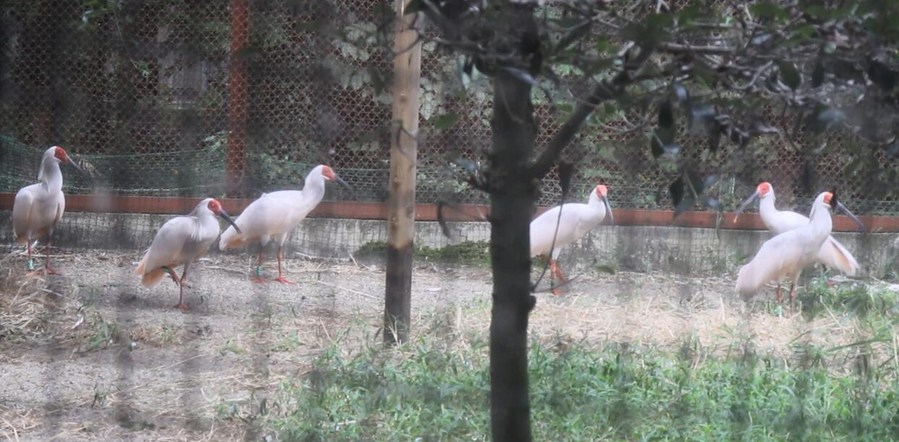
Photo taken on Sept. 28, 2022, shows the crested ibises in Sado island, Niigata Prefecture, Japan. (Xinhua/Yang Guang)
In 2012, the released birds hatched chicks in the wild.
In Jan. 2019, Japan lowered the status of the birds from "extinction in the wild" to "critically endangered."
According to reports, there are about 650 crested ibises in Japan by the end of 2021.
For hundreds of years, Sado has been famous for its gold and silver mines. It was not until the 1980s that the mining industry was abandoned as the environment was severely damaged. It was crested ibises from China that helped Sado achieve harmony between human and nature.
The rare birds have also been providing a boost to the local economy on the island, as crested ibises have become a symbol for local products, especially agricultural products.
The island, with a population of 55,000, attracted some 200,000 visitors every year before the COVID-19 pandemic, as most of them came to Sado to see crested ibises.
"We cherish the crested ibises from China very much. You You and Yang Yang are happy here, and I hope they live long like Kin," Hokari told Xinhua. ■

